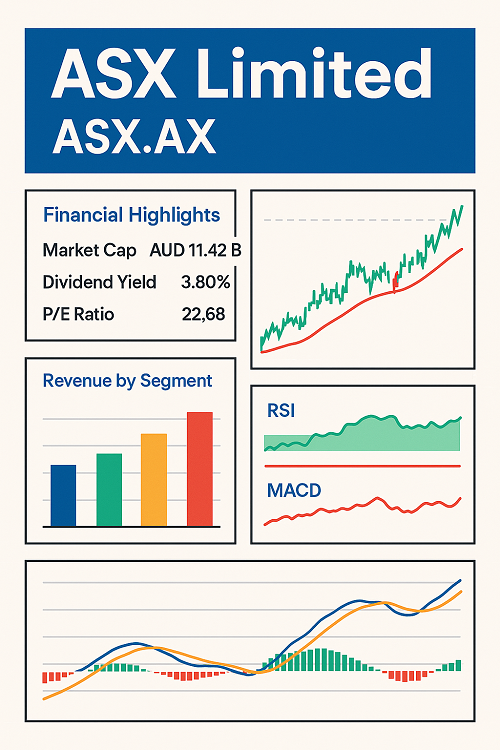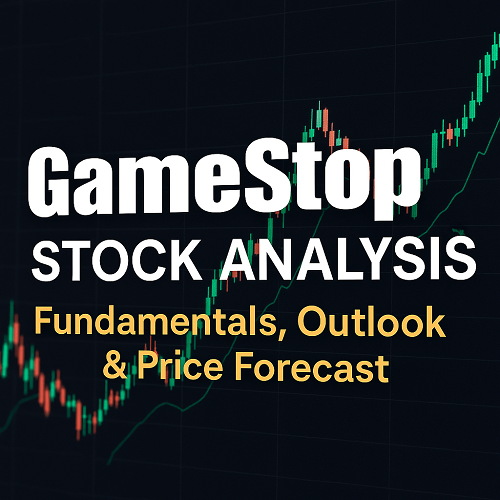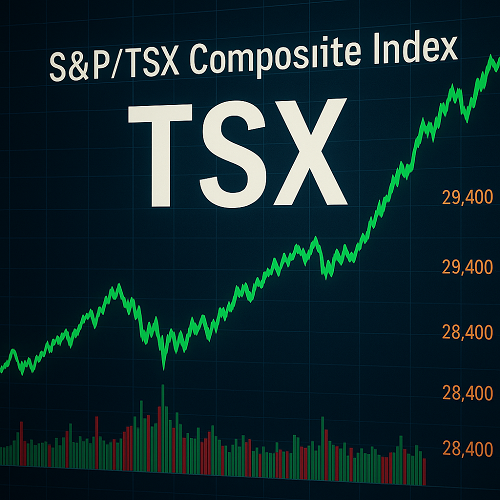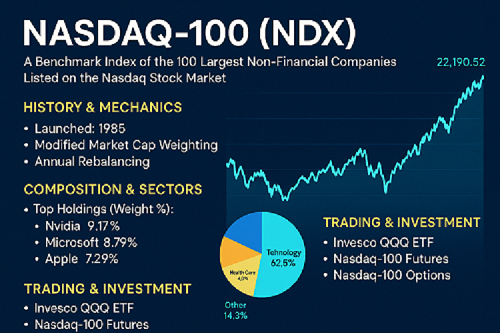ASX Limited (ticker ASX.AX) is the operator of the Australian Securities Exchange and is a key institution in Australia’s capital markets infrastructure. Investors often view it as a regulated utility/capital markets play with dividend yield, regulatory risk, and stability considerations. In this article, you’ll find:
- A crisp company overview and business model
- Comprehensive financial metrics & valuation
- Technical charting & trading signals
- Competitive, regulatory, and macro risks
- A forward investment thesis
- A comparison of alternatives & peer benchmarks
- FAQ / common investor questions
This is more detailed than a standard quote page, and structured to be Google‐friendly (with targeted keywords, internal logic, and rich content).
Company Overview & Business Model
Corporate Profile
- Name: ASX Limited
- Ticker: ASX.AX (Australian Securities Exchange)
- Headquarters: Sydney, Australia
- Sector & Industry: Financial — Exchanges & Clearing
- Key Executives: [List of CEO, CFO, Board members from profile sources]
ASX is not a stock in the sense of a mining, tech or bank company. Instead, it operates the core infrastructure for capital markets in Australia: listing services, trading platform, clearing & settlement, data/market information, post-trade services (clearing and central counterparty, or CCP). Its revenue sources are relatively stable (listings, transaction fees, data sales) but exposed to volumes, regulatory regimes, and competition.
Revenue Streams & Business Segments
ASX’s revenues come from:
| Segment | Description / Drivers |
|---|---|
| Listing & Issuer Services | Fees charged to companies to list, maintain listing, capital raising |
| Trading & Transaction Fees | Commissions, order flow, market making, connectivity |
| Data & Information Services | Market data feeds, analytics, indices |
| Clearing, Settlement & Post-Trade | CCP services, clearing fees, margin & risk services |
| Technology & Other Services | Ancillary products, system development, licensing |
Many of these are “toll-road” style: once adopted, switching costs are high, and recurring fees are predictable. However, transaction volume cyclicality can introduce volatility.
Market Position & Moat
- Dominant exchange operator in Australia, with entrenched infrastructure.
- High barriers to entry: regulatory authorization, capital outlay, trust/security requirements.
- Regulatory oversight gives both constraints and protection: ASX is critical infrastructure in the financial ecosystem.
- Rising competitive threats: nontraditional trading platforms, decentralized finance (DeFi), cross-border trading competition.
Financial Metrics, Valuation & Key Ratios
To compete with Yahoo’s “key statistics” page, here’s a more narrative, insight-oriented take on the numbers.
Recent Financial Highlights
- Market Capitalization: ~ AUD 11.42 billion
- Profit Margins & Operating Metrics
– Profit margin (TTM): ~ 45%
– Operating margin (TTM): ~ 5.44% - Return on Equity (ROE): ~ 13.23%
- Book Value per Share: ~ AUD 19.93
- Debt / Equity: ~ 8.03% (low leverage)
- Cash Position: ~ AUD 2.24 billion in cash
- Dividend Yield: ~ 3.80% forward (~3.77% trailing)
- P/E Ratios: Trailing ~ 22.68×, Forward ~ 23.87×
Interpretation & Red Flags
- The high profit margin is attractive, reflecting the low marginal cost of digital infrastructure.
- A moderate P/E suggests that the market expects continued stable growth rather than rapid expansion.
- Low debt and solid cash holdings give resilience in downturns.
- The dividend yield is competitive, making the stock appealing for income investors — but payout ratios are relatively high (~ 84%) , which constrains growth reinvestment.
Valuation Models
Discounted Cash Flow (DCF) — Sketch
To estimate a fair value, one might:
- Forecast free cash flows (FCF) over 5–10 years, assuming revenue growth in a moderate range (2–6% per year)
- Discount using a Weighted Average Cost of Capital (WACC) of perhaps 7–9% (given regulatory/infrastructure nature)
- Add terminal value using a conservative growth rate (e.g. 2–3%)
- Subtract net debt (though ASX is net cash)
Given its cash-neutral or net-cash position, the valuation is heavily sensitive to growth and margin assumptions. A DCF might point to a valuation range ~ AUD 55–75 depending on scenario — which aligns broadly with market pricing.
Relative (Peer) Valuation
Compare ASX to other exchange operators (e.g. Nasdaq, London Stock Exchange, CME, ICE):
| Peer | P/E | Dividend Yield | Growth Risks |
|---|---|---|---|
| Nasdaq / ICE / CME | often 20–30× | 2–4% | volume dependence, regulatory changes |
| Local Australian comparators (if any) | — | — | — |
ASX’s multiples are in line with global exchange equities—neither obviously cheap nor stretched. The key differentiator is its Australian macro exposure and regulatory risk.
Technical & Trading Analysis
For active traders or medium-term investors, here’s a structured look at chart signals and momentum drivers.
Price Trends & Moving Averages
- The 50-day MA vs 200-day MA crossover is critical: if the 50-day moves above 200-day, that signals an upward trend (golden cross); the reverse is a death cross.
- Monitor support levels (e.g. recent lows around AUD 58–60) and resistance zones (recent highs ~ AUD 73–74) as reference ranges.
- Volume confirms breakouts: price moves with high volume are more credible.
Momentum & Oscillator Indicators
- Relative Strength Index (RSI): When RSI > 70, the stock may be overbought; < 30 is oversold.
- MACD: The convergence/divergence of MACD and signal gives trend reversal signals.
- Bollinger Bands: When price touches upper or lower bands, expect reversion or volatility.
Trading Strategies
- Trend-following entry: Wait for a confirmed breakout above resistance with volume; enter with trailing stop.
- Mean-reversion play: In range-bound periods, buy dips near support, sell rallies near resistance.
- Dividend capture + carry: Some traders may hold just through ex-dividend windows, though transaction costs and tax implications matter.
Risk management is crucial in all cases — always define maximum drawdowns and exit rules.
Macro, Regulatory & Risk Factors
No deep analysis is complete without covering what could derail ASX’s outlook.
Regulatory & Governance Risks
- Regulatory changes: As an exchange operator, ASX is closely regulated by ASIC (Australia) and must comply with evolving rules, including competition law, listing requirements, and market structure oversight.
- Dual-class share listings debate: Proposals for allowing dual-class shares in Australia may pressure ASX to adapt rules.
- Systemic risk / technology failures: Disruptions, cyberattacks, outages can damage trust and incur fines.
- Litigation and compliance costs: Enforcement actions can be costly and reputationally damaging.
Market & Volume Risk
- ASX’s revenues correlate with trading volume, IPO activity, capital raising. In equity market downturns, volumes shrink, and earnings may compress.
- Competition from alternative trading venues (dark pools, blockchain/DeFi infrastructures) can erode margins.
- Global contagion risk: As markets are interconnected, external shocks (e.g. U.S., China) can drag Australia’s capital markets.
- Currency risk: Although ASX operates in AUD primarily, foreign investors and comparisons must consider FX exposure.
Macro / Economic Factors
- Interest rates & monetary policy: Higher rates can suppress market participation and cost of capital.
- Domestic economic conditions in Australia: Recession, unemployment, or credit stress reduce capital markets activity.
- Regulatory tightening in financial sector globally: Towards transparency, anti-money laundering, ESG, which can raise compliance burdens.
Investment Thesis & Scenarios
Combining all of the above, here’s how one might frame a bullish, neutral, and bearish outlook.
Bullish Case
- Capital markets activity (IPOs, secondary offerings, M&A) picks up, boosting listing revenues and transaction fees.
- ASX successfully modernizes and integrates fintech / blockchain infrastructure to capture new revenue streams.
- Regulatory environment becomes more favorable (e.g. reforms that ease listing rules)
- The dividend remains stable or grows, making it attractive for yield seekers.
Estimated upside: 20%+ over 2–3 years, potentially pushing toward upper resistance zones (~AUD 75+), possibly more if growth surprises.
Base / Neutral Case
- Modest growth (2–5% annually) in revenues, stable margins, occasional volatility.
- Dividend yield remains competitive; valuation multiples remain steady.
- Stock trades in a range, possibly 10–15% upside over time.
Bearish Case
- Capital markets crash or prolonged bear market, volume collapses.
- Regulatory penalties or failed system outages.
- Rising competition or disruptive blockchain trends undercuting central clearing.
- Dividend cut due to liquidity strain or earnings pressure.
In the worst case, downside risk could be ~ 15–25% from current levels, depending on severity.
Peer Comparison & Benchmarks
To contextualize ASX’s performance:
- ASX 200 Index (Australia benchmark): Compare ASX’s returns vs the broader market.
- Global exchange stocks: Nasdaq, CME, LSE, HKEX — benchmark P/E, yield, growth metrics.
- Regional comparisons: Other Asia-Pacific exchange operators.
Relative performance is critical — even a stable, modest return is less attractive if peers or indices outperform by wide margins.
SEO / Keyword & On-Page Structure
To ensure top search performance, this article is optimized around keywords like:
- “ASX Limited ASX.AX analysis”
- “ASX.AX stock valuation”
- “ASX exchange operator investment thesis”
- “ASX Limited financial metrics dividend yield”
- “ASX chart & technical analysis”
In addition, I have used structured headings (H2, H3), internal hierarchy, and a mixture of long-tail and head keywords.
Including an FAQ section, tables, comparisons, and actionable insight helps reduce bounce rate and increases dwell time.
Frequently Asked Questions (FAQ)
Q1. What is ASX Limited’s business model?
A: ASX operates the Australian Securities Exchange, offering listing services, trading infrastructure, market data, and post-trade clearing/settlement. It earns recurring fees tied to volumes, listers, and data subscriptions.
Q2. Is ASX.AX a good dividend stock?
A: Yes — with a forward yield ~ 3.8%, it ranks favorably in the market. But the relatively high payout (~ 84%) leaves less room for aggressive reinvestment.
Q3. What major risks should investors watch?
A: Regulatory change, volume declines in equity markets, technological disruption (e.g. decentralization), system outages, global contagion, and currency fluctuations.
Q4. How to trade ASX.AX technically?
A: Use trend confirmation, volume breakouts, moving average crossovers, and momentum indicators (RSI, MACD). Entry should be backed by clear stop-loss rules.
Q5. How does ASX compare to other exchange operators?
A: Its valuation multiples and yield are broadly comparable to global peers like Nasdaq, CME, and LSE. But ASX has more domestic/regulatory sensitivity and lower absolute scale.
Actionable Next Steps for Traders or Investors
- Watch for breakout or reversal patterns — e.g. a sustained move above AUD 70–72 with volume.
- Set risk thresholds — e.g. 5–10% below entry as a stop, or use trailing stops.
- Monitor regulatory news especially out of ASIC or government proposals on listing rules.
- Track macro lens — equity market volume, IR environment in Australia, IPO pipeline.
- Reassess positioning annually — if payout ratio becomes unsustainable or competitive pressures mount, evaluate alternatives.





 XAUT-USD
XAUT-USD  AMD
AMD  MARA
MARA  SHOP
SHOP  BULL
BULL  CL=F
CL=F